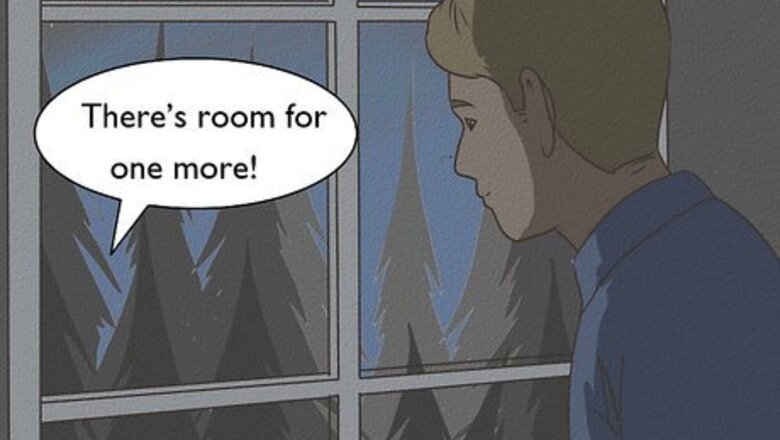
views
Ghostly Visitations
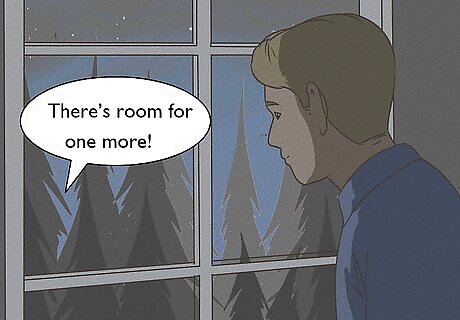
Room for one more “A man wakes up one night to see a crowded hearse below his window. A voice calls out: ‘There’s room for one more!’ Scared, he stays quiet until it leaves. The next day, the man waits for an elevator, and it arrives full. He hears: ‘There’s room for one more,’ and declines, remembering the hearse. The doors close…and the elevator crashes to the ground.” This story has been making the rounds since the early 20th century. It has a lot of room for detail—do the people in the elevator look like the people in the hearse? Does the voice sound the same both times he hears it? Make your voice raspy when you call out from the hearse, and pause before you say the titular line again at the elevator.
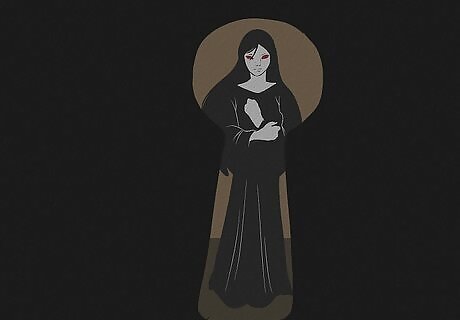
The keyhole “When a man looks through the keyhole of a locked up, off limits hotel room, he sees a ghostly pale woman, facing the corner. He looks again the next night, but only sees red. Confused, he asks the concierge about the room, and she tells him that a husband murdered his wife there. The wife was odd, though. She had white skin…and totally red eyes.” ”The keyhole” is a classic story to tell while you’re camping, but it’s extra scary if you’re staying at an old hotel that night.
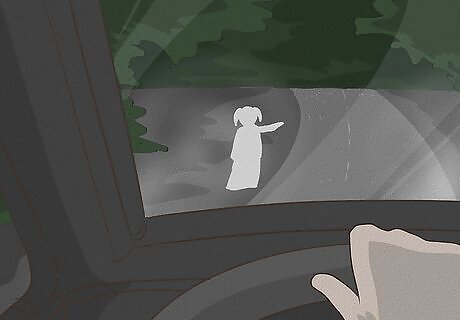
The hitchhiker “Late one night, a boy picks up a girl by the side of the road. It’s cold, so he lends her an overcoat, and drives her home. She leaves with the coat, so he comes back the next morning to retrieve it. When he knocks on the door, an old woman answers. He asks for the girl and she explains that the girl was her daughter…who died 10 years ago, that very night.” “The vanishing hitchhiker” is a story with many variations, all describing different kinds of ghostly passengers trying to make their way back to where they belong. This story can be scary or sweet, depending on where you end it. For a less spooky story, have the mother say “She was trying to come home,” for the last line.

Milk bottles “When a woman steals two bottles of milk every day, a grocer gets curious. One day, instead of calling the police, he follows her out the door. She runs to a graveyard and disappears. The grocer hears a muffled cry from under a headstone, so he digs up the grave. He finds the woman, dead, along with a living baby and two milk bottles.” “Milk bottles” is a depression era tale about the lengths parents will go to keep their children safe. As creepy as it is, it’s also a bittersweet story of a dedicated ghost mother.
Close Calls
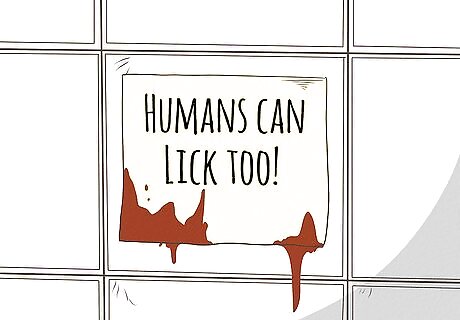
The lick “A scared girl tries to sleep while her parents are away, and is comforted when her dog licks her hand from under the bed. All night she wakes up to thuds and dripping sounds, but is always reassured by the lick on her hand. In the morning, she’s horrified to find her dog hanging over her shower, dripping blood, and a note that reads: ‘Humans can lick, too.’” “The lick” hits home for any kid who’s afraid of what lies under their bed at night. It’s been told all over America and Europe for at least 150 years.
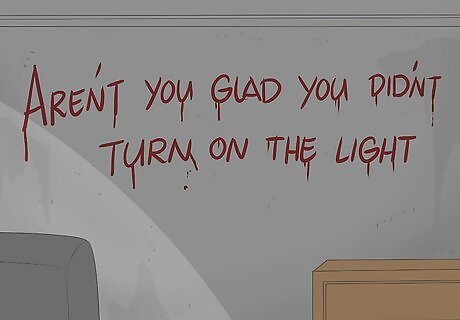
Don’t turn on the light “A girl pulls an all-nighter at the library before a final, but has to creep back to her dorm when she realizes she forgot a book. She keeps the lights off so she won’t wake her roommate. The next morning, the girl returns to her room to find her roommate dead, and a note written on the wall in blood: ‘Aren’t you glad you didn’t turn on the light?’” This is another story that really benefits from a pause before the last line. If you have any teens going off to college in your circle, this one’s sure to get a scare. You can foreshadow the ending by talking about a metallic smell in the room, or by commenting on how fast and heavy the “roommate’s” breath was that night.

The clown statue “A couple hires a babysitter and asks her to sleep in their bedroom that night to be close to the kids. She goes in, but gets creeped out by a life-sized clown statue in the corner. She goes downstairs to call the parents and explain that she wants to sleep in the living room, and they tell her to take the kids and run—they don’t own a clown statue.” Creepy clowns are a horror staple that scare adults and children alike. Play up this story by dropping hints that the clown could be near you. Maybe the house was in this very woods, or the parents returned and the statue was gone.

High beams “A woman is followed home by a truck one night after stopping for gas. It gets closer and closer, and flashes its high beams at her every few minutes. She jumps out of the car when she gets to her house—and so does the other driver. He reveals the truth: a man with a knife was crouched in the back of her car. Each time he stood up to attack her, the driver would shine his lights to stop him.” This is a great story for older kids, especially those that have just gotten their driver’s license. Play into the repetition of this story. Slow down and lower your voice as you talk about the beams going on again…and again…and again.
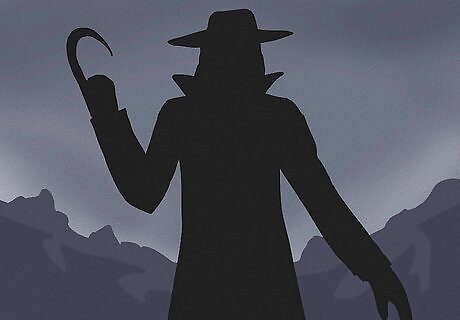
The hookman “A couple driving to a movie hears a thump from the side of their car, which starts to wobble. The boy stops to check it out, but the girl begs him not to go—the radio says there’s a hook handed killer on the loose. They hear a loud screech so they race away to the movies…only to find a metal hook hanging from the passenger door.” “The hookman” is a classic driving story from the 50s or 60s. Driving dates were getting popular back then, which inspired a whole slew of “don’t get out of the car” type tales. You can turn up the scare factor with this alternate ending: “The man gets out of the car, but he doesn’t come back. The woman starts to hear a tapping sound on the roof of the car, so she locks the doors and hides until morning…when she finds the sliced up body of her boyfriend hanging above the car, dripping blood.” This is a great story to personalize. If you’re out in the woods, then they’re “the very woods the murderer roams.” Maybe you knew this couple in high school, or heard the story in the news.
Scary Stories for Kids

The coffin Be careful if you walk beside a cemetery, you might end up like the unlucky protagonist of “The coffin.” “A man is chased by a jumping coffin from the edge of the cemetery all the way back to his home and into his bathroom. In a last ditch effort to save himself, he throws the only thing within reach: a bottle of cough syrup…and the coffin stops.” This is a great story to tell little kids. It’s got the scare factor, but ends in a clean and silly resolution.
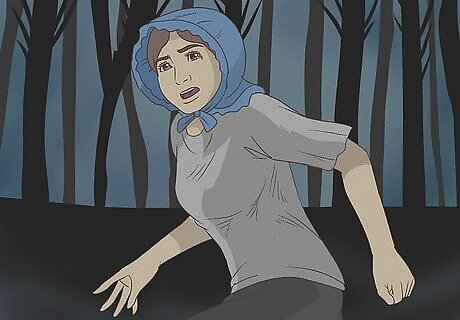
Baby blue bonnet “A woman can’t take care of her baby, so she ties a blue bonnet to its head, and leaves it out in the woods a few miles from her house. She goes home, and hears: ‘Baby blue bonnet, 1 mile away.’ She arrives, and: ‘Baby blue bonnet, 1 mile away.’ A few minutes later: ‘Baby blue bonnet, coming up the driveway.’ She runs upstairs: ‘Baby blue bonnet, in the hallway.’ She hides under the bed: ‘Baby blue…BOO!’” “Baby blue bonnet,” or “blue baby bonnet,” is a repetitive, pop-goes-the-weasel-like jumpscare story. You can beef it up by adding more baby blue bonnet steps, like “on your front porch,” “in front of your door,” etc. Suspenseful stories are all about voice. Take some time to think about how you want to deliver the “baby blue bonnet” lines, and practice your jumpscare delivery.
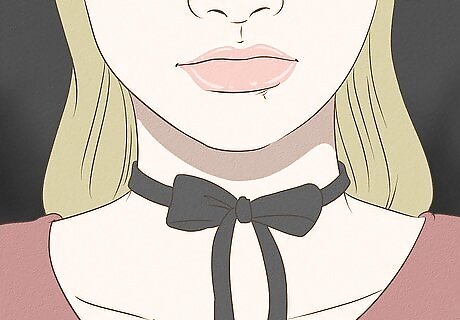
The ribbon. “There was a girl who always wore a ribbon around her neck. A boy fell in love with her, and they began to date. After a while, he asked her why she always wore the ribbon, but she wouldn’t say. They got married, and all he could think about was the ribbon. One day, he took a pair of scissors and cut it off her neck…and her head fell right off.” “The ribbon,” or “The black ribbon,” is an old tale about curiosity getting the better of you. It’s kid friendly and can be made more lighthearted by giving the disembodied head some lines at the end.

The hairy toe “An old woman is out foraging when she finds a hairy toe on the ground. She takes it home, eats it for dinner, and goes off to bed. That night, she hears a far away cry: “Who-oo-o has my hairy toe?” It calls again and again, closer each time, until a huge creature bursts into her hut. She cries that she ate the hairy toe, and the monster gobbles her up.” This is a suspenseful sound effects story. Say the hairy toe lines louder as the monster gets closer, and add in sections about the sounds from the forest: “She heard something out in the woods—stomp, stomp, stomp.” “She heard twigs go snap and trees cre-aaak.”
Folklore

The goatman “Legend has it, the goatman was created by scientists trying to merge human and animal DNA. Now, some Maryland locals say he stalks the woods, decapitating dogs, making goat noises, and silently joining in on campfire circles… hey, weren’t there only eight of us here?” ”The goatman” creates a super scary atmosphere when you’re in the woods, and you can play it up even further by whipping your hand up at the very end and pointing just behind the person across from you. While the goatman is local to the American East Coast, it’s perfectly feasible that he’d stalk the woods of some other state.
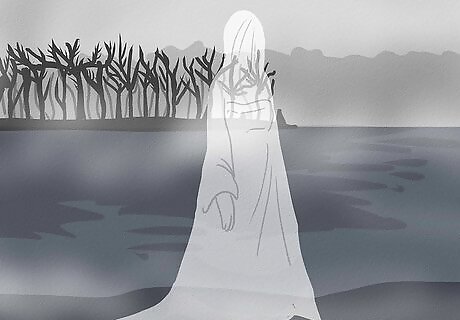
La llorona “La llorona, or the weeping woman, went mad with grief and drowned her two children and herself. Now, she stands by the side of the river in a white dress and weeps. She chases down anyone who sees her, and steals away the little kids she finds, confusing them for her own. She paces by the water, crying…listen closely, you may even be able to hear her right now.” “La llorona” may be the most famous story in Mexican folklore. There are dozens of interpretations of what she does and where she comes from, so you have the freedom to embellish. Consider reading up on her ghost before your next camping trip to get some material.
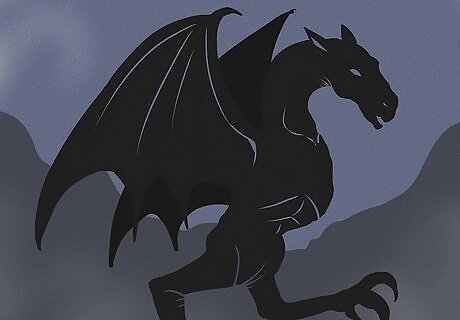
The Jersey devil “When the Jersey devil leaves its lair, it wreaks havoc on surrounding towns and farmlands, killing livestock and scaring children. It’s a kangaroo-like beast, with leathery wings and a devil’s tail, sharp claws, and pointy horns. Even though ‘Jersey’ is in its name, it’s been spotted in surrounding states, like Maryland. Be careful out there.”
How to Make up and Tell Scary Stories

Choose a topic that you’re familiar with. If you know a lot about what you’re talking about, it’s much easier to add details. If you have a topic that can be set in the woods (or wherever you’re telling the story) that’ll make it even scarier.
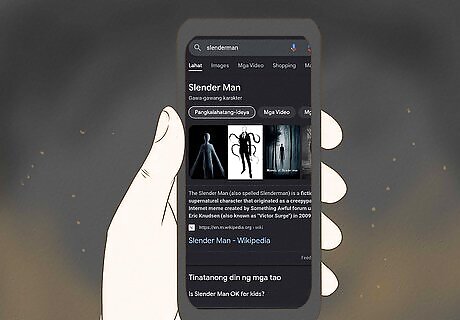
Research stories to find a theme you’d like to adapt. There are some themes that pop up a lot in traditional scary stories: people who disappear after you meet them, science experiments gone wrong, creatures that stock the woods, killers-at-large, etc. If you find a story that you like, keep the basic structure and just change the details.
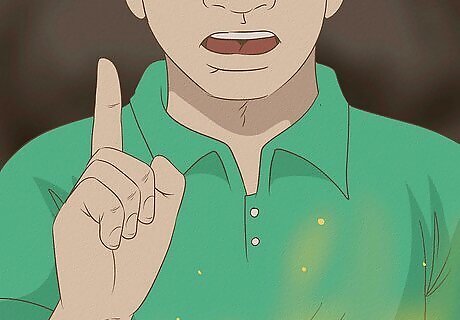
Connect the story to your surroundings. Stories are scariest when they feel like they could blend into real life at any moment. Add details like “it happened ten years ago…on a night eerily similar to tonight…” If there are a lot of animal noises, tell a story about a creature, if you hear a twig snap, add in a killer who stalks through the woods.

Adjust your story based on the age of your audience. Not all age groups can handle the same level of horror—if you’re telling stories to junior campers, dial down the blood and guts or opt for a more silly story.

Fully commit to the tale. For the story to feel real, it has to feel like it’s real to you. Use a grave tone and occasionally make eye contact with the other people in the circle. React to your story, act troubled by the events, and stare off into the sky or the fire to seem like you’re reliving the terrible tale. Your commitment will look different for different stories. If you’re telling a silly, jump scare story (like “Baby blue bonnet”) your demeanor would be much lighter than if you were talking about the disappearance of your brother…in these very woods.

Start speeding up near the end of the story. Gradually increase the pace of your story as you approach the climax. Don’t go too quickly; you’re building tension, not rushing through the end. Take a slight pause right before the chilling “punch line” of the story: “He turned around, (beat) and the hitchhiker was gone.”

Leave your ending ambiguous. Good, open-ended stories leave people with fearful, wandering minds. If you’re not doing a jump scare story, let your voice trail off at the end, like you’re lost in the memory of your own tale.



















Comments
0 comment